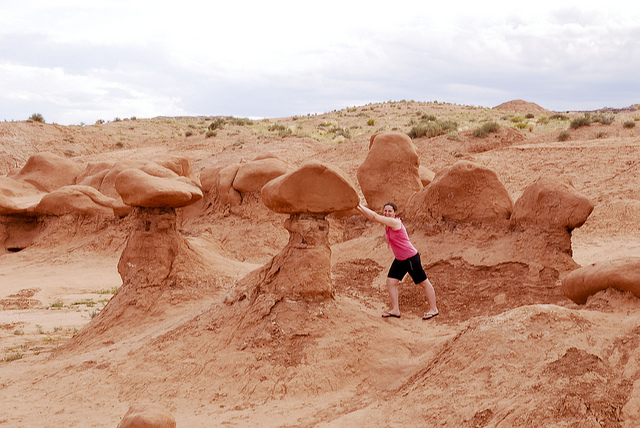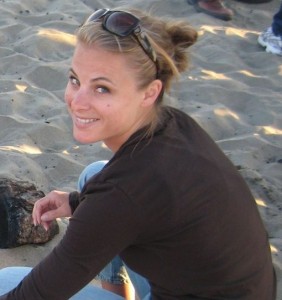I Am a Social Intrapreneur
/ When you’re looking for CSR work, there’s a very clear mantra that everyone repeats, day in and day out. It goes something like this:
When you’re looking for CSR work, there’s a very clear mantra that everyone repeats, day in and day out. It goes something like this:
“Real CSR jobs are few and far between. If you want to do CSR, go get a functional job within a big company and innovate from the inside out.”
In social change circles, this mantra could also be called social intrapreneurship. Unlike social entrepreneurship, where you're starting something completely new and distinct, social intrapreneurship is all about finding ways to innovate within the constraints of your current organization.
For instance, if you’re an operations social intrapreneur, you might be on the lookout for ways to streamline your supply chain so as to reduce environmental inefficiencies, but that doesn't mean that your job title has the word 'sustainability' in it. Similarly, if you’re a marketing social intrapreneur, you might find an opportunity to promote the green benefits of your product, even if it’s not an explicitly eco-friendly item. This, at its core, is what social intrapreneurship is all about.
I learned this “innovate from the inside out” mantra early in grad school, which means that while I was a student, social intrapreneurship was often on my mind and in my blog (check out some stories I wrote about Best Buy and eBay as well as a short video interview I gave about it!).
And because I modeled my opinion of social intrapreneurship on the stories I'd learned and written about, I also came to associate the topic with a few specific images and messages in my head: corporate boardrooms in big, boxy skyscrapers; bureaucrats in suits who prioritize profits over everything else; and yes, even pushing rocks up mountains with my bare hands! It might not sound like your idea of fun, but hey – let's just say that if you want to do CSR work, you quickly get used to the idea that your job one day might involve persuading some boulders to start rolling.
Because of these definitive ideas that I had about when and where social intrapreneurship could happen, when I started my job with OpenIDEO I essentially cast off my social intrapreneurship intentions. I mean, folks at IDEO don’t exactly wear suits, and they certainly don’t sit around in corporate boardrooms!
As I’ve settled in to my work and my team, though, what I’ve learned is that social intrapreneurship is actually an integral part of my day job. Without even realizing it, I’ve become a social intrapreneur.
Let's see if I can explain.
OpenIDEO is a social innovation startup within IDEO; that is, we're a new business incubating within the confines of an established organization (no matter how un-corporate it might be). Because of that, we face many of the same challenges our social intrapreneurship colleagues in more corporate settings deal with every day:
- Cutting back the number of cooks in the kitchen: As a new initiative, we look for guidance from all corners of the organization, not to mention outside of IDEO too. The good news is that everyone has an opinion, and the bad news is that everyone has an opinion! How do we sift through these differing intentions and use them to make smart choices?
- Being bold and realistic: This especially comes into play when we try to balance our potential to grow with our limited capacity and bandwidth as a small team. How do we pursue leads, push ourselves to develop, and be brave and bold – without burning out?
- Solidifying “the OpenIDEO Way": Part of what makes OpenIDEO so fun and unique is that mostly everything we're doing is new and uncharted (after all, we’ve been live for less than year!). Eventually, though, you start realizing you’re reinventing the wheel every time you get asked to do something slightly different. Is there a way to stay flexible and open to new opportunities while also developing some standard processes that will help us scale and replicate?
- Doing well and doing good: It’s the oldest cliché in the book, but it certainly applies to what we’re working on too. While we are out for social impact, we’re no good to anyone if we don’t make money. How might we find ways to prove our business model and impact our world at the same time?
Ultimately, as a new offering within an established company, we operate very similarly to all the other social intrapreneurs out there trying to create change within their own organizations. Whether you’re a small CSR team, or a single person with a passion for sustainability or philanthropy, the work of a social intrepreneur isn’t easy. With that said, I can also state with 100% confidence that it’s a lot more fun than pushing rocks uphill!
How are you applying social intrapreneurship within your own organization? What tips, tricks or guidance would you want to share with me and others? I'd love to hear from you.


 One topic that comes up often in CSR discussions is social intrapreneurship (in fact, it’s something
One topic that comes up often in CSR discussions is social intrapreneurship (in fact, it’s something